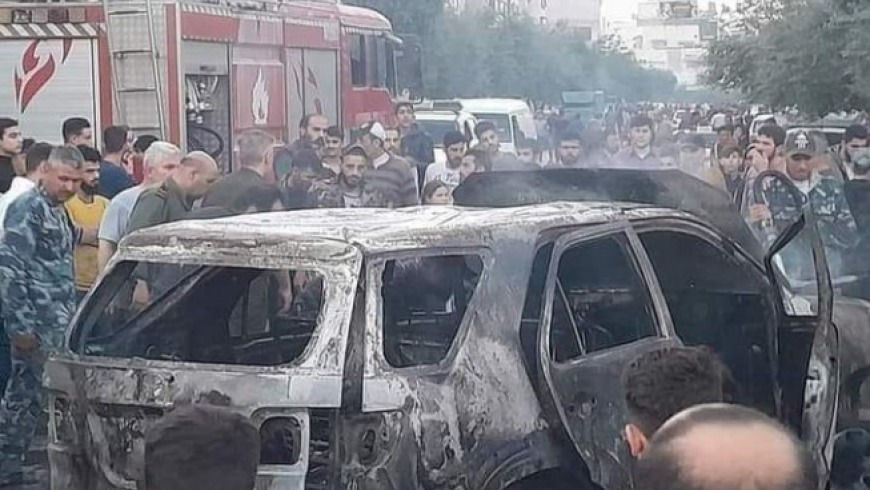The assassination of the director of the Military Construction institution’s branch within the Syrian regime’s Ministry of Defense has raised concerns regarding internal conflicts within the institution and the diverse allegiances among its members, as reported by confidential sources to Syria TV. Bassel Abdel Qader was killed by an explosive device that detonated in his car outside his residence in the al-Qusour neighbourhood of Hama. This incident occurred mere hours after a similar explosion in Homs, which fortunately did not cause any injuries.
Conflict between wings
Sources within the military construction branch in Hama informed Syria TV that Basil Abdul Qadir was aligned with Major General Suhail al-Hassan. However, there were ongoing efforts to replace him with another official from the village of al-Rabia, located 15 kilometres west of Hama. Abdul Qadir had reportedly expressed concern to a colleague about threatening messages he had received from unknown individuals recently, prompting him to relocate from Qamhana to the city of Hama for safety. Notably, Rabia has gained notoriety due to the presence of militias associated with numerous massacres perpetrated by regime forces in recent years, with a proliferation of light and medium weapons among its inhabitants.
The regime forces: Previous “killings”
In 2020, local media outlets reported a series of high-profile assassinations within the Syrian regime. Brigadier General Ali Jamblat, a close confidant and special assistant to Maher al-Assad, commander of the Fourth Division and brother of the Syrian president, was reportedly killed by snipers in the Yafour area of Damascus.
During the same year, Brigadier General Thaer Khair Bek of the Air Force Intelligence was shot dead in front of his house in the al-Zahera area of Damascus by unidentified assailants. This incident coincided with the killing of Brigadier General Jihad Zaal, head of the Air Force Intelligence branch in the Eastern governorate, along with several of his associates, under mysterious circumstances on the Deir-ez-Zor-Damascus road.
Additionally, news networks reported the deaths of several other regime figures. Nizar Zeidan, a leader in the Fourth Division, was killed when an explosive device detonated in his car in the Wadi Barada area of Damascus countryside. Brigadier General Maan Idris, also a leader in the Fourth Division, was shot dead in front of his house in the Project Dummar area of Damascus, just a day after the killing of Brigadier General Haitham Othman from the Qardaha area in the countryside of Latakia. Both individuals had records filled with crimes in service of the regime.
Amidst the increasing frequency of such assassinations, media sources reported the killing of Colonel Somar Deeb, an investigator at the notorious Sednaya prison, dubbed “the human slaughterhouse,” in front of his residence in the commercial neighbourhood of Damascus, alongside other officers who met similar fates under mysterious circumstances.
On June 23, pro-Assad regime pages mourned the deaths of Major General Suleiman Muhammad Khalouf, director of the Homs Military Academy, and First Lieutenant Bashar Wafiq Alama, without specifying the time and location of their killings.
In 2018, Brigadier General Mahmoud Ahmed Maatouk, the director of Sednaya prison, passed away amidst regime secrecy, with his death officially attributed to unknown traffic accidents and heart attacks. Major General Ahmed Khader Tarraf, Chief of Staff of the Vehicles Department in Harasta, Colonel Muhannad Kaadi, responsible for securing the protection of T4 Military Airport east of Homs, Major General Staff Ahmed Mahmoud Ghanem, and Director of Scientific Research in the Masyaf area of Hama countryside Aziz Esber, the mastermind behind the use of explosive barrels, were among many officers who met similar fates under ambiguous circumstances.
This article was translated and edited by The Syrian Observer. The Syrian Observer has not verified the content of this story. Responsibility for the information and views set out in this article lies entirely with the author.


